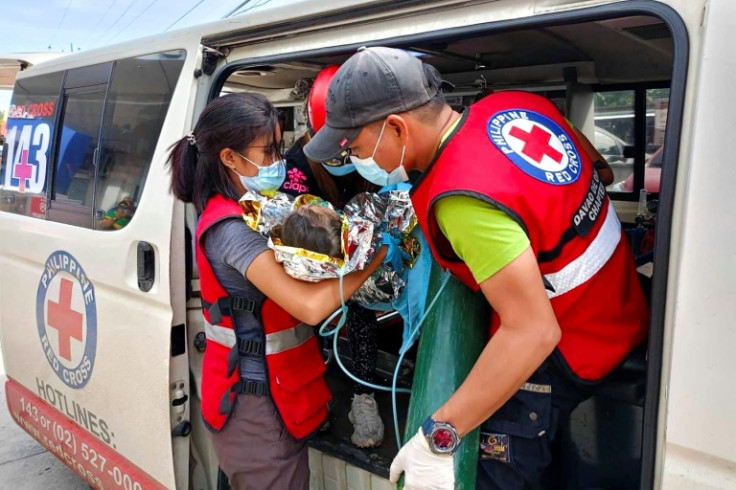
In an incident that can only be termed a miracle, a 3-year-old was rescued after being trapped for nearly 60 hours in rubble and mud. As many as 63 people are missing after a landslide hit the gold-mining village of Masara in the southern Philippines on Tuesday night. The girl was among the few lucky ones who have been rescued since.
The rescue workers had to use their hands and shovels to pull the girl alive from under the debris. They can be seen carrying the girl to a nearby hospital, wrapped in a blanket.
"It's a miracle," said Edward Macapili, an official from Davao de Oro. He told AFP: "That gives hope to the rescuers. A child's resilience is usually less than that of adults, yet the child survived."
Rescuers have been looking for survivors for days, but continuous heavy rain and damaged communication lines have made the operations difficult. They were forced to temporarily stop their operations after a magnitude 5.9 earthquake struck on Saturday.
On Sunday, Davao de Oro provincial disaster chief Randy Loy said that they are "still hoping to save more people even after four days," adding that they could not guarantee the chances of survival.
According to local media reports, 54 people have died in the incident. Most of the people missing were gold miners who were waiting in two buses to be driven home when the landslide struck and buried them.
"The rescue team is doing its best, even if it's very difficult," the Reuters news agency quoted Macapili as saying. Meanwhile, the authorities have moved over 1,100 families to evacuation centres for their safety.
Widespread deforestation due to mining activities, illegal logging, and mountainous terrain has made the Philippines much more vulnerable to landslides. Philippines is one of the most disaster-prone countries in the world.
According to the Philippine government's Mines and Geosciences Bureau (MGB), up to 80 percent of the country's total land area is landslide prone, It is the the fourth most exposed country to landslide risk, after Indonesia, India and China.
In 2006, a massive landslide buried an entire village in the southern Philippines. More than 1,000 people, including 200 school-children, died in the horrific natural disaster. The landslide was caused by two weeks of unusually heavy rains.
A report by the United Nations has said that pollution, extreme weather events, droughts, and floods have affected millions of people across the world.
According to a report by the UN's World Meteorological Organisation (WMO), two million people have already been killed by extreme weather, climate, and water-related events since 1970.







